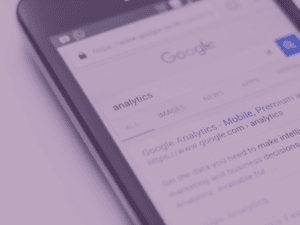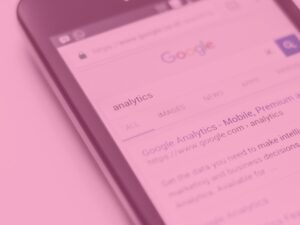
Blog
SEO, Accessibility, and why You Should Give a Sh*t
5th Apr, 2022
Steve Job
15% of the world’s population, or approximately 1 billion people, live with some form of disability (making them the world’s largest minority). But people with disabilities are often forgotten.
Nearly 14.1 million people (roughly 1 in 5) in the UK are disabled. Only 17% of these were born with their disability, with only 19% of working age adults having a disability.
Accessibility
When we think of web accessibility, we think of people with visual or mobility impairments.
Other disabilities aren’t generally taken into consideration.
However, these could include:
- Neurodiversity – Autism, ADHD, Dyspraxia, Dyslexia, Epilepsy, OCD, Anxiety and many more (apologies to any I didn’t include in this list)
- Cognitive impairments
- Hearing loss or hearing issues
- Colour blindness
But these also include situational impairments and environmental ones, too, such as:
- Limited or slow internet connection
- Screen glare or a brightly lit room
- A broken arm or finger
So why should you make your website accessible for any of the accessibility issues above? What’s the ROI? Surely the cost of doing so outweighs the benefits right?…Right?
Uh…..no, probably not.
Accessibility And ROI
It is estimated that the spending power of people with disabilities and impairments equates to roughly £274 billion a year (and that’s just in the UK). That’s a lot of money. This spending power incudes family and friends, because people talk. Think back to the last bad web (or shopping) experience you had. Bet you told someone about it.
73% of potential disabled customers experience some form of barrier on more than a quarter of websites they visited. 73%! That is 730 million people if my maths serves me correct (it usually doesn’t). To put that into context, that’s twice the population of the USA.
In the US, web accessibility is covered by the Americans Disability Act (1990), which prohibits discrimination against disabled individuals. Websites with inaccessible components can be considered discriminatory. Here in the UK, we have the equality act. Site owners are required to anticipate the needs of a potential disabled customer and make reasonable adjustments.
Notable Cases
In 2019, Beyonce.com was sued when Beyoncé fan Mary Conner, tried to buy concert tickets but found:
- No alt text
- No keyboard access
Her Attorney said:
“There are many important pictures on beyonce.com that lack a text equivalent … As a result, Plaintiff and blind beyonce.com customers are unable to determine what is on the website, browse the website or investigate and/or make purchases.”
Nike
A year earlier, in 2018, Nike were sued because their site was inaccessible to screen readers. Maria Mendizabal accused Nike of having two websites – Nike.com and Converse.com – that didn’t allow equal access for blind and visually impaired web users.
And?
A few years ago I wrote in a blog that, “the web is now the modern shopping experience but may also be the only way people could find your business”. This is probably truer than ever (thanks COVID).
If people can’t use your website because of accessibility issues (be those caused by a disability, or just a bad user experience) that’s £249 billion worth of potential business opportunities that won’t come back. A huge opportunity cost.
But why think about Accessibility when optimising for search engines?
Honestly, if you aren’t thinking about the user when you think about SEO, then you need to be.
Accessibility should just be User Experience (after all, aren’t people with accessibility issues users!?). Having an accessible website isn’t just for the benefit of those with impairments either. It allows all users to navigate the site, find what they are looking for, and have a better experience whilst on site.
And as an SEO, we don’t get to blame the developer anymore. Sure, web developers need to make sites that are accessible from a build perspective, but our job as SEOs is to get involved from that first step and test everything.
For example, do the images have file names that explain the content of the image or have you named it 1686523.jpeg? Do the images have alt attributes? Or do they just say “logo”?
Alt attributes are useful. Someone may have images turned off, or they may have a visual impairment and are using assistive technology to read the screen for them. Does the alt attribute you plan to use accurately explain the context of the image? We can even use keywords (good for Google image search rankings) in alt attributes, just make sure you adequately explain what the image is.
How do accessibility & SEO work together?
Page Titles
All SEOs will know about page titles. They are crucial for SEO. But were you aware that they are the first element a screen reader will read? The first interaction a visually impaired person has, is your page title. Make it accurate. Does it reflect the content of the page? This is just good practice at the end of the day, but it’s also about creating an accessible experience.
Header Structure
In SEO, we tend to put most of our effort and focus on the H1 tag (and less so on H2-H6). Headers help make the content make sense. A good header structure should be logical and describe the content that will be under it. The clearer it is, the easier it is to understand. Great for any potential cognitive impaired users, but also great for anyone that uses a screen reader.
A good, well defined header structure is a must.
Alt Tags
I briefly touched on these, but basic web accessibility guidelines state that descriptive alt text should be used. It is useful for anyone with a visual impairment (or slow internet speed) as they can still get the context of the image.
Good, descriptive alt text also helps search engines. They can’t “see” an image. But they can “see” image alt text, and by helping search engines understand your images, you can boost your search rankings.
Mark-ups
Assistive technologies use these to understand what elements exist on a page. Assistive tech & their users rely on these to navigate a page without being able to necessarily see the content or use a mouse to navigate it.
Videos
Videos can help you build links. People share them on social media. Videos are great!
Doom scroll through social media and you will see millions of videos. However, according to a digiday.com study, 85% of Facebook videos are watched without sound.
So how do you capture this audience while still meeting accessibility issues? Allow me to introduce Closed Captions and transcriptions.
A SIDE NOTE
If you have videos on your site and you insist on auto playing them, please make sure you have the video muted. Closed captions will still play and people can unmute the video if they want to. There is nothing worse than using a screen reader to navigate a site only to have a video start playing with volume (I have tried).
People who use screen readers can’t just click the play button using their mouse. They have to listen to their screen reader, trying to spot the video tag, while your video is playing over the top!
Install Chromevox on your browser. Go on Youtube and play a video. Now try to navigate your favourite site.
Seriously, try it. It’s awful!
You haven’t got to the point on what accessibility has to do with SEO?
Maybe, but if you think that, then you might’ve missed the point. Most of the things mentioned are just considered best practice SEO techniques anyway.
I stated a few years ago that accessibility didn’t affect SEO. But I caveated that statement with a huge YET. (Google had just rolled out lighthouse when I stated this).
So how do I know if my site is accessible?
- Google Lighthouse
When Lighthouse first came out, ‘Accessibility’ was one of the audits it ran. Lighthouse will also provide suggestions on fixes as well. - Screaming Frog (or another crawler)
Any crawler can help provide error codes and broken links (bad user experience). You can also use them to extract all header tags as well.
Good Examples Of Accessibility
Autism.org – I love this. Autism.org introduced a dimmer switch to the top menu. This allows you to switch between calm and vivid colour schemes.
Guidedogs.org – This one is fairly self explanatory as to why. But it is done so well.
Even big businesses are thinking about accessibility. Morrisons introduced “Quieter Hour” with support from the National Autistic Society. Tesco and Asda have followed suit. With quiet hours on the weekends during busier times. With Tesco confirming their “Quiet Hour” will become a permanent fixture (and the fact that it happens Saturday 9-10 is great too).
Sure, speed, content and context may be king for now, but that’s only for the moment. Accessibility should not be ignored.
So who am I and why do I care?
My name is Steve. I am an SEO and have been for nearly 10 years. The reason I care, and why I am passionate about educating people on online accessibility, is because I was recently diagnosed with Autism. At the end of the day, shouldn’t I be able to use the internet like every other person out there? Shouldn’t everyone?
Useful Links
I have included some links to sites that were really useful and had some great educational material. Hopefully this list can grow as time goes on (and hopefully one day I can change the name of this blog to “Users, Why you should give a Sh*t” instead).
https://www.boia.org/wcag-2.0-a/aa-principles-and-checkpoints
A11Y Project – https://www.a11yproject.com/Aspiritech – I wanted to give this company a shout out as well. A world-class QA testing company that hires individuals on the autism spectrum.






